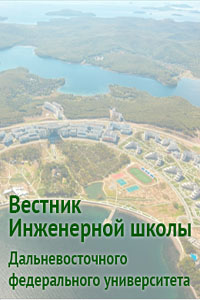The main directions of Japanese architecture during the Meiji and Taisho periods (late 19th – early 20th centuries)
DOI:
https://doi.org/10.24866/2227-6858/2024-1/136-146Keywords:
architecture, Japan, history of architecture, Meiji, Taisho, giyefu, tatsuno, imperial crown, architectural styles, Manchuria, SakhalinAbstract
The article examines the main directions of Japanese architecture during the Meiji and Taisho periods. It was during these periods that the formation of the architectural communities of the empire took place, influencing the architecture of the entire Asia-Pacific region in the 20th and 21st centuries. The prerequisites for the formation of the Japanese giyefu style, based on a combination of Western and traditional architecture, and the invitation of a large number of foreign advisers to the country are shown. The text describes the four most important advisor personalities and their major achievements. The next step is the 4 most important Japanese architects of the Taisho period, they absorbed Western education and completely mastered the craft of an architect, in the European sense. In addition to landmark buildings for Japan, they transmitted to society their vision of architecture, which coincided with the line of the government and the emperor. The last part of the article outlines other directions of Japanese architecture, which developed from the Giyefu style to the Imperial Crown style, or which opposed themselves to Europeanized architecture – the modernists. It concludes by describing the three identified architectural trends with their antecedents and implications within the Asia-Pacific region
References
Целуйко Д.С. Архитектура зданий Русско-Китайского банка // Проект Байкал. 2023. № 19(74). С. 156–161. https://doi.org/10.51461/pb.74.26
Крадин Н.П. Русские города в Китае // Архитектура Восточной Сибири и Дальнего Востока. Вып. 1: Города Дальнего Востока: сб. науч. ст. / НИИ теории архитектуры и градостроительства Рос. акад. архитектуры и строительных наук; Хабаровский филиал НИИТИАГ РААСН; Хабаровский гос. техн. ун-т. Хабаровск, 2002. С. 109–142.
Базилевич М.Е., Ким А.А. Русские инженеры – строители банков Маньчжурии // Проект Байкал. 2021. № 18(68). С. 147–151. https://doi.org/10.51461/projectbaikal.68.1816
Smolianinova T.A., Bazilevich M.E. Architecture of consularbuildings in Manchuria (Lubin) during the first half of the 20 century // IOP Conference Series: Materials Science and Engineering. 2020. Vol. 753. P. 1–7.
Ким А.А. Особенности архитектуры филиалов Банка HSBC в Маньчжурии // Архитектон: известия вузов. 2021. № 4(76). https://doi.org/10.47055/1990-4126-2021-4(76)-10
Checkland, Olive. Japan and Britain after 1859: creating cultural bridges. Routledge, 2002.
Целуйко Д.С., Смольянинова Т.А. Архитектурный стиль тацуно в Маньчжурии // Проект Байкал. 2023. № 20(77). С. 70–77. https://doi.org/10.51461/issn.2309-3072/77.2195
Современная архитектура Йокогамы. URL: https://www.kunputw.com/archives/yokohama (дата обращения: 20.10.2023).
Hideo Izumida, Life and Works of Charles Alfred Chastel de Boinville // Japan's Journal of Architectural Historians. 2009. Р. 13–17.
Izumida H.A study on British architects in East and Southeast Asia: 1830–1940 // Journal of Asian Architecture and Building Engineering. 2003. № 2(2). P. 131–136.
Tseng A.Y. Styling Japan: The Case of Josiah Conder and the Museum at Ueno, Tokyo // Journal of the Society of Architectural Historians. 2004. Vol. 63, №. 4. Р. 472–497.
Всеобщая история городских водопроводных станций Окаямы. Отделение городских водопроводных сетей Окаямы, 1944. URL: https://dl.ndl.go.jp/pid/1058733/1/39 (дата обращения: 21.10.2023).
Downloads
Published
Issue
Section
License
Copyright (c) 2024 Far Eastern Federal University: School of Engineering Bulletin

This work is licensed under a Creative Commons Attribution 4.0 International License.

